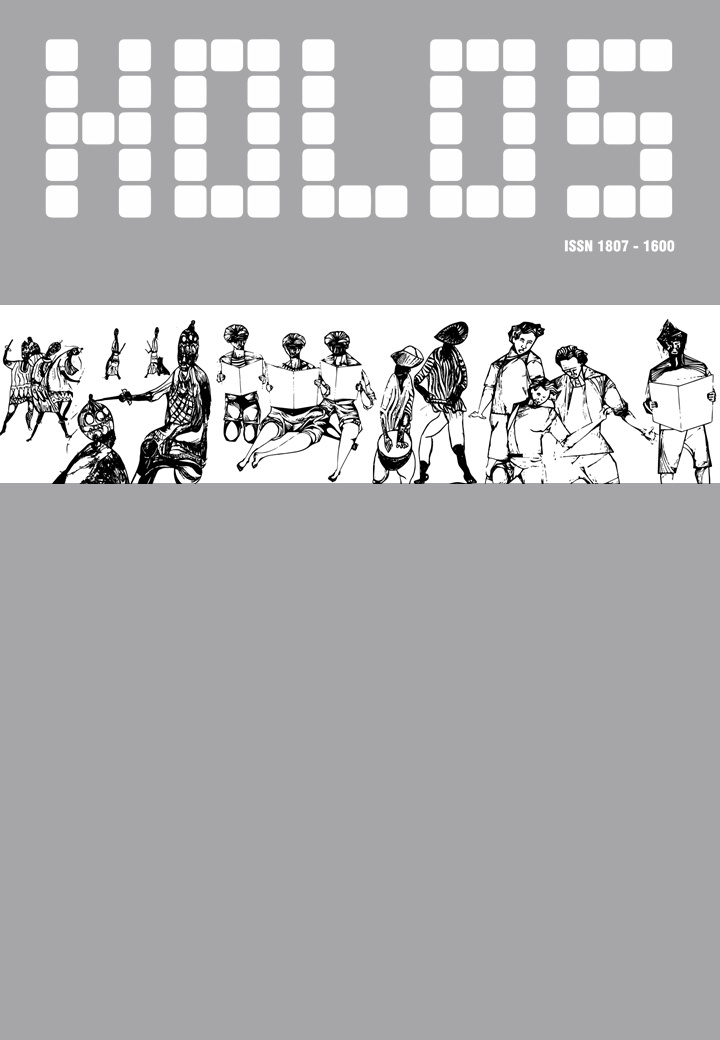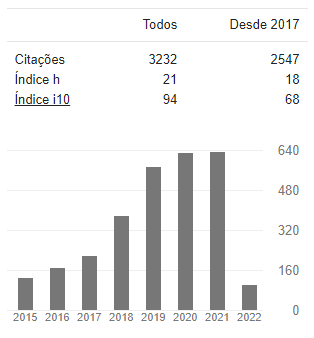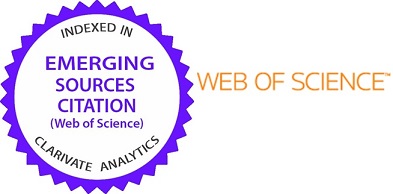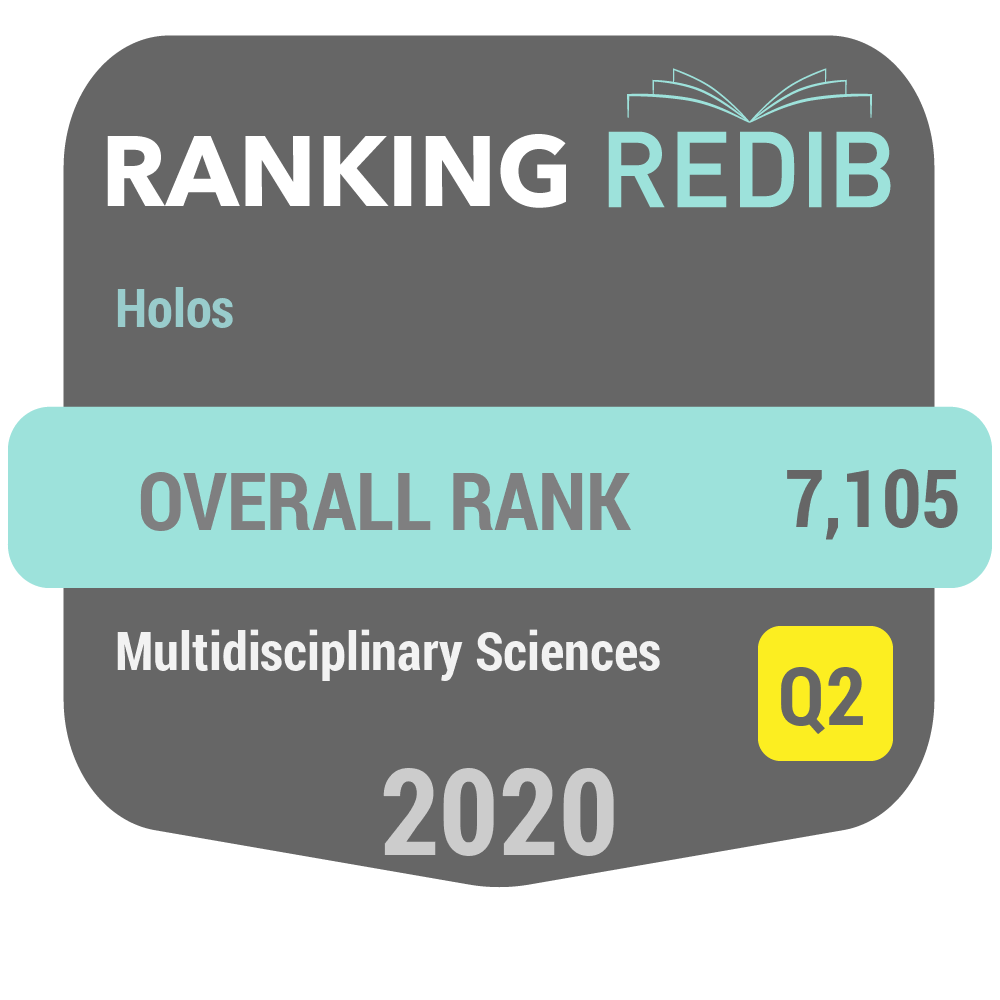ASSESSING CAVITATION EROSION ON SOLID SURFACES USING A CAVITATION JET APPARATUS
DOI:
https://doi.org/10.15628/holos.2023.16306Palavras-chave:
Cavitação, Erosão por Cavitação, Jato de Cavitação Submerso, Geometria do Bocal, Aparelho de jato de cavitação (CJA)Resumo
Este estudo é dedicado ao exame da erosão induzida por cavitação, um fator crítico na otimização da eficiência de sistemas hidráulicos, incluindo usinas hidrelétricas e sistemas de bombeamento. Para isso, realizamos uma análise de sensibilidade utilizando um aparelho de jato de cavitação (CJA) e uma configuração experimental que apresentava um tanque de teste cilíndrico vertical, um bico submerso e uma amostra de alumínio (especificamente, liga 6351 T6). O estudo manteve uma distância consistente de 5 cm e um diâmetro de orifício de 2 × 10-3 m. Duas geometrias distintas de bicos foram testadas para avaliar sua influência na erosão por cavitação. Os resultados revelaram que o bocal cônico com bordas afiadas de 20° resultou nas maiores taxas de erosão, enquanto o bocal comercial (MEG 2510) causou comparativamente menos erosão. Ao padronizar a duração do teste para 1.200 segundos e usar um índice de cavitação de 0,14, os pesquisadores evitaram a sobreposição de poços. Em resumo, o CJA, com esses ajustes, demonstrou sua eficácia como ferramenta de avaliação da resistência de superfícies sólidas à cavitação.
Downloads
Referências
Arabnejad, M. H., Amini, A., Farhat, M., & Bensow, R. E. (2020). Hydrodynamic mechanisms of aggressive collapse events in leading edge cavitation. Journal of Hydrodynamics, 32, 6–19. DOI: https://doi.org/10.1007/s42241-020-0002-8
Asnaghi, A., Svennberg, U., Gustafsson, R., & Bensow, R. E. (2021). Propeller tip vortex mitigation by roughness application. Applied Ocean Research, 106, 102449. DOI: https://doi.org/10.1016/j.apor.2020.102449
Back, A. J., da Silva Souza, G., Galatto, S. L., Corseuil, C., & poleto, C. (2023). EROSIVITY INDEX FOR BRASIL BASED ON CLIMATOLOGICAL NORMALS FROM 1991 TO 2020. HOLOS, 3(39). DOI: 10pts.15628/holos.2023.16329
Descovi, C. S., Zuffo, A. C., Mohammadizadeh, S. M., Murillo Bermudez, L. F., & Sierra, D. A. (2023a). Utilizing Long Short-Term Memory (LSTM) Networks for River Flow Prediction in the Brazilian Pantanal Basin. HOLOS, 5(39). https://doi.org/10.15628/holos.2023.16315 DOI: https://doi.org/10.15628/holos.2023.16315
Descovi, C. S., Zuffo, A. C., Mohammadizadeh, S. M., Murillo Bermudez, L. F., & Sierra, D. A. (29/11-01/12/2023). Modeling River Flows in the Brazilian Pantanal Basin Using Long Short-Term Memory (LSTM) Networks. 7th SSS, Porto Alegre, Brazil. In Press.
El Hassan, M., Bukharin, N., Al-Kouz, W., Zhang, J.-W., & Li, W.-F. (2021). A Review on the Erosion Mechanism in Cavitating Jets and Their Industrial Applications. Applied Sciences, 11(7), 3166. DOI: https://doi.org/10.3390/app11073166
Falvey, H. T. (1990). Cavitation in chutes and spillways. US Department of the Interior, Bureau of Reclamation Denver, CO, USA.
Filho, J. G. D., & Genovez, A. I. (2009). Alternative apparatus to evaluate cavitation damage. Journal of materials in civil engineering, 21(12), 797–800. DOI: https://doi.org/10.1061/(ASCE)0899-1561(2009)21:12(797)
Fonseca, R. A., Olegario Júnior, F. das C., Lino, H. F., & Bergerman, M. G. (2017). TECHNICAL EVALUATION OF REAGENT DOSING PUMPING SYSTEMS IN FLOTATION CIRCUITS. HOLOS, 6, 92–99. https://doi.org/10.15628/holos.2017.6525 DOI: https://doi.org/10.15628/holos.2017.6525
Franc, J.-P., & Michel, J.-M. (2006). Fundamentals of cavitation (Vol. 76). Springer science & Business media. DOI: https://doi.org/10.1007/1-4020-2233-6
Gavidia, J. C. R., Chinelatto, G. F., Basso, M., Souza, J. P., Soltanmohammadi, R., Vidal, A. C., Goldstein, R. H., & Mohammadizadeh, S. M. (2023). Utilizing integrated artificial intelligence for characterizing mineralogy and facies in a pre-salt carbonate reservoir, Santos Basin, Brazil, using cores, wireline logs, and multi-mineral petrophysical evaluation. Geoenergy Science and Engineering, 231, 212303. https://doi.org/10.1016/j.geoen.2023.212303 DOI: https://doi.org/10.1016/j.geoen.2023.212303
Gavidia, J. C. R., Mohammadizadeh, S. M., Chinelatto, G. F., Basso, M., Souza, J. P. da P., Vidal, A. C., & Goldstein, R. H. (2023). Bridging the Gap: Integrating Static and Dynamic Data for Improved Permeability Modeling and Super K Zone Detection in Vuggy Reservoirs. Journal of Geoenergy Science and Engineering. In Press.
Genovez, A., & Dalfré Filho, J. (2008). Efficiency evaluation of cavitating jet apparatus. Efficiency Evaluation of Cavitating Jet Apparatus, 107–112.
Gensheng, L., Zhonghou, S., Changshan, Z., Debin, Z., & Hongbing, C. (2005). Investigation and application of self-resonating cavitating water jet in petroleum engineering. Petroleum science and technology, 23(1), 1–15. DOI: https://doi.org/10.1081/LFT-20009686218
Gualtieri, C., & Chanson, H. (2021). Physical and numerical modelling of air-water flows: An Introductory Overview. Environmental Modelling & Software, 143, 105109. DOI: https://doi.org/10.1016/j.envsoft.2021.105109
Hutli, E., Nedeljkovic, M. S., Bonyár, A., & Légrády, D. (2017). Experimental study on the influence of geometrical parameters on the cavitation erosion characteristics of high speed submerged jets. Experimental Thermal and Fluid Science, 80, 281–292. DOI: https://doi.org/10.1016/j.expthermflusci.2016.08.026
Hutli, E., Nedeljkovic, M. S., Radovic, N. A., & Bonyár, A. (2016). The relation between the high speed submerged cavitating jet behaviour and the cavitation erosion process. International Journal of Multiphase Flow, 83, 27–38. DOI: https://doi.org/10.1016/j.ijmultiphaseflow.2016.03.005
Jahangir, S., Ghahramani, E., Neuhauser, M., Bourgeois, S., Bensow, R. E., & Poelma, C. (2021). Experimental investigation of cavitation-induced erosion around a surface-mounted bluff body. Wear, 480, 203917. DOI: https://doi.org/10.1016/j.wear.2021.203917
Kadivar, E., Moctar, O. el, Skoda, R., & Löschner, U. (2021). Experimental study of the control of cavitation-induced erosion created by collapse of single bubbles using a micro structured riblet. Wear, 486–487, 204087. https://doi.org/10.1016/j.wear.2021.204087 DOI: https://doi.org/10.1016/j.wear.2021.204087
Lv, D., Lian, Z., & Zhang, T. (2018). Study of Cavitation and Cavitation Erosion Quantitative Method Based on Image Processing Technique. Advances in Civil Engineering, 2018, e5317578. https://doi.org/10.1155/2018/5317578 DOI: https://doi.org/10.1155/2018/5317578
Ma, J., Gnanaskandan, A., Hsiao, C.-T., & Chahine, G. L. (2021). Message Passing Interface Parallelization for Two-Way Coupled Euler–Lagrange Simulation of Microbubble Enhanced HIFU. Journal of Fluids Engineering, 143(8), 081105. DOI: https://doi.org/10.1115/1.4051148
Mohammadizadeh, S. M., Filho, J. G. D., Descovi, C. S., Murillo-Bermúdez, L. F., Sierra, D. A., & Perez, G. A. C. P. (29/11-01/12/2023). Cavitation Jet Apparatus for the Evaluation of Cavitation Erosion of Solid Surfaces. 7th SSS, Porto Alegre, Brazil. In Press.
Mohammadizadeh, S., Moghaddam, M. A., & Talebbeydokhti, N. (2021). Analysis of flow in porous media using combined pressurized-free surface network. Journal of Porous Media, 24(10). http://dx.doi.org/10.1615/JPorMedia.2021025407 DOI: https://doi.org/10.1615/JPorMedia.2021025407
Murillo Bermudez, L. F., Abreu, A. E. S. de, Pereira, S. Y., Mohammadizadeh, S. M., Descovi, C. S., Sierra, D. A., & Martim, A. L. S. S. (29/11-01/12/2023). CONTAMINAÇÃO DAS ÁGUAS SUBTERRÂNEAS POR ESGOTO SANITÁRIO: COMO AVALIAR A FONTE DA CONTAMINAÇÃO? 7th SSS, Porto Alegre, Brazil. In Press.
Nagalingam, A. P., Thiruchelvam, V. C., & Yeo, S. H. (2019). A novel hydrodynamic cavitation abrasive technique for internal surface finishing. Journal of Manufacturing Processes, 46, 44–58. https://doi.org/10.1016/j.jmapro.2019.08.014 DOI: https://doi.org/10.1016/j.jmapro.2019.08.014
Nikeghbali, P., Omidvar, P., Akbari, G., & Mohammadizadeh, S. M. (2014). THE STUDY ON SEDIMENT MOTION AND THE MODEL OF DAM BREAK ON THE MOVABLE BED BY SPH METHOD. THE STUDY ON SEDIMENT MOTION AND THE MODEL OF DAM BREAK ON THE MOVABLE BED BY SPH METHOD. INTERNATIONAL CONFERENCE ON COASTS, PORTS AND MARINE STRUCTURES (ICOPMAS). https://sid.ir/paper/948560/en
Peng, C., Tian, S., Li, G., & Wei, M. (2020). Enhancement of cavitation intensity and erosion ability of submerged cavitation jet by adding micro-particles. Ocean Engineering, 209, 107516. DOI: https://doi.org/10.1016/j.oceaneng.2020.107516
Sierra, D. A., Luvizotto Jr, E., Mohammadizadeh, S. M., Descovi, C. S., Murillo Bermudez, L. F., & Filho, J. G. D. (29/11-01/12/2023). TRANSITÓRIOS HIDRÁULICOS EM LINHAS DE RECALQUE DE ESGOTO - REVISÃO DA LITERATURA. 7th SSS, Porto Alegre, Brazil. In Press.
Soyama, H. (2020a). Cavitating jet: A review. Applied Sciences, 10(20), 7280. DOI: https://doi.org/10.3390/app10207280
Soyama, H. (2020b). Cavitation peening: A review. Metals, 10(2), 270. DOI: https://doi.org/10.3390/met10020270
Soyama, H., Kikuchi, T., Nishikawa, M., & Takakuwa, O. (2011). Introduction of compressive residual stress into stainless steel by employing a cavitating jet in air. Surface and Coatings Technology, 205(10), 3167–3174. DOI: https://doi.org/10.1016/j.surfcoat.2010.11.031
Soyama, H., Simoncini, M., & Cabibbo, M. (2020). Effect of cavitation peening on fatigue properties in friction stir welded aluminum alloy AA5754. Metals, 11(1), 59. DOI: https://doi.org/10.3390/met11010059
Standard Test Method for Erosion of Solid Materials by Cavitating Liquid Jet. ([s.d.]). Recuperado 15 de outubro de 2023, de https://www.astm.org/g0134-17.html
Takahashi, K., Osedo, H., Suzuki, T., & Fukuda, S. (2018). Fatigue strength improvement of an aluminum alloy with a crack-like surface defect using shot peening and cavitation peening. Engineering fracture mechanics, 193, 151–161. DOI: https://doi.org/10.1016/j.engfracmech.2018.02.013
Yamauchi, Y., Soyama, H., Adachi, Y., Sato, K., Shindo, T., Oba, R., Oshima, R., & Yamabe, M. (1995). Suitable region of high-speed submerged water jets for cutting and peening. JSME International Journal Series B Fluids and Thermal Engineering, 38(1), 31–38. DOI: https://doi.org/10.1299/jsmeb.38.31
Yan, R., Monaghan, J. J., Valizadeh, A., & Xu, F. (2015). The effect of air on solid body impact with water in two dimensions. Journal of Fluids and Structures, 59, 146–164. DOI: https://doi.org/10.1016/j.jfluidstructs.2015.08.015
Zhao, J., Jiang, E., Qi, H., Ji, S., & Chen, Z. (2020). A novel polishing method for single-crystal silicon using the cavitation rotary abrasive flow. Precision Engineering, 61, 72–81. DOI: https://doi.org/10.1016/j.precisioneng.2019.10.002
Downloads
Publicado
Como Citar
Edição
Seção
Licença

Este trabalho está licenciado sob uma licença Creative Commons Attribution-NonCommercial-NoDerivatives 4.0 International License.









































